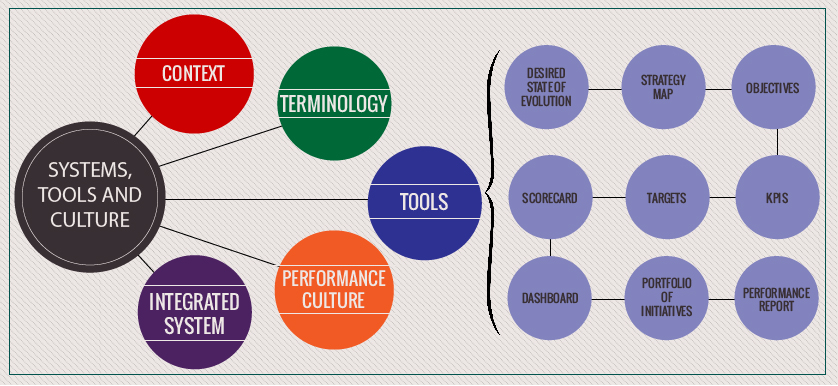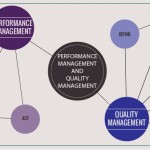Good practice in performance management – integrated, systemic and cultural
Oftentimes I am asked for advice on how to do performance management right. A very relevant question, as it is easier to make mistakes in deploying performance management practices rather than to get it right.
Clarifying terminology and understanding the context of each entity is important in designing good performance architecture that fits its environment and cultural dynamics.
Still, I consider that there are at least three key pillars of good practice in performance management:
1. An integrated performance management system
2. The use of tools to support the organizational evolution
3. A performance culture oriented towards learning, innovation and happiness
The choice of terms is the first step to understand the merits of an integrated performance management system:
- Integrated = that harmoniously unifies separate elements into a cohesive whole
- Performance Management = actively driving the purposeful achievement of desired outcomes
- System = a whole composed of several integrated parts
These are powerful descriptive terms. Many organizations still use terms such as performance management framework, guidelines, rules and regulations, reporting. These are limited terms, flavourless and rigid.
Calling it a system immediately raises questions regarding its components, their relationship and the interaction with the environment.
The meaning of integration
Integrated reflects a philosophical underpinning of such a system, that acts as a central nervous system for the organization, being connected to all other systems and transferring key data related to the decision making process of the organization.
It acts as a power board, to which other systems such as budgeting, communications, quality management, production, supply chain, portfolio management are plugged in.
As the backbone of the organization, this system ensures organizational direction is followed, progress is monitored and the relevant information for decision making is communicated.
Integrated also reflects a unified approach to managing organizational, functional area and individual performance. These three levels traditionally employ independent performance management systems that in theory should talk to each other, but in practice more often than not, don’t.

integrated 2
An integrated performance management system embodies elements from across levels, with subsystems at strategic, operational and individual level. The major difference is developing a unified performance architecture that clearly maps the integrated performance management system of the organization, instead of trying to patch out and connect subsystems to each other.
The acknowledgement of the use of management tools is another important ingredient of a performance management journey. As humans, it is in our nature to use tools to achieve desired outcomes: ploughs to farm land, trams for transport and musical instruments for playing music.
In an organizational context, we need tools in order to achieve more. The range of tools in performance management is very diverse, as tools in a business context relate more to conceptual tools and actions, rather than physical objects:
- Key Performance Indicators
- Targets
- Performance reports
- Objectives
- Strategy Map
- Performance Scorecard
- Operational Dashboard
- Online performance portal
- Desired State of Evolution
- Initiatives
- Performance reviews
- Individual Performance Plans
- KPI catalogue
- Performance glossary
- Performance architecture
Organizations – living entities in the 21st century
Acknowledging such tools and building a taxonomy, which is easy to communicate/understand, represents an essential step towards a clear and elegant approach to developing and deploying an integrated performance management system.
While the system and tools form contribute to the structure of the performance architecture, the organizational culture brings it to life. Organizations are live entities, with their own identity largely influence by the people that work together under its banner.
While traditionally, organizations have been managed using command and control thinking, today more and more organizations adopt systems thinking or a blend between the two. More and more knowledge workers have to make decisions independently & frequently, and traditional approaches to management are falling behind.
Today, the social contract oftentimes extends beyond the traditional principal – agent (employer – employee) relationship driven by productivity and salary compensation. Nurturing employees to become the best they can be is rewarding on both personal and professional levels.
An employee with a fulfilling personal life is a happier person, and this happiness tends to have a positive impact on the professional life. A more accomplished employee in a personal sense also tends to impact positively on organizational performance, in certain conditions.
Therefore, organizations that don’t look at the relationship with employees only in the strict sense of the principal / agent relationship may be the ones that are better at nurturing a culture of performance.
Actively nurturing the personal and professional development of employees creates an environment prone to learning and innovation, where creativity and improvement emerge organically.
Such an environment requires a rewiring of the pay-for-performance mentality, to learn-for-performance mentality. A shift from performance for growth and profit, to performance for achievement and happiness – from executing strategy, to developing performance.
Image source:Walker, Rob 1992, “Rank Xerox – Management Revolution”, Long Range Planning, Vol. 25, No. 1, pp. 9 to 21

Tags: integration, Management performance, Management Tools, Performance Architect Update, Performance Management System






